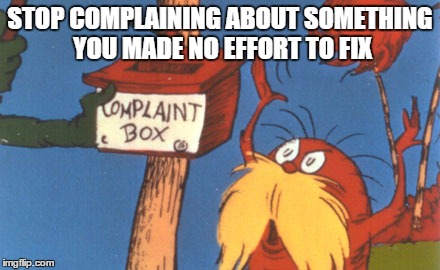It's increasingly common to hear terms like 'fail fast', 'lean', 'agile', 'prototype', 'user-centric design', 'discovery phase' and 'startup' used by both senior leaders and line staff when discussing the design of their services and development of IT solutions.
More organisations are announcing roles specifically focused on cultivating innovative ideas, and implementing systems and technology solutions to support innovation processes.
All of these steps, to a greater or lessor degree, help surface the innovative thinking already within these organisations. I've seen a number of cases where managers were positively surprised at the number and variety of innovative ideas they managed to uncover with a simple idea crowdsourcing process.
I find it predictable that organisations experience an initial flood of ideas once language, systems and permissions conducive to innovating are introduced into an organisation.
In many cases these were pre-existing ideas which had been bubbling away in the minds of people across various organisational nooks and crannies, laying dormant until there was an opportunity to be heard.
However once this initial surge of pent-up ideas has been spent, organisations will need to think carefully about how to foster and sustain a deeper ongoing innovation culture.
While permanently adapting the language, approvals and systems is a good start towards fostering long-term innovative behaviour, organisations should also closely consider the physical environments they create for their workers, and how their staff are equipped and organised to achieve business goals.
I call this the feng-shui of innovation.
Feng shui is a Chinese philosophical system for organising objects and spaces to generate positive flows of energy.
Good feng shui in a room or building supposedly leads to good fortune - making people more productive and energised, feeds money in (rather than out) and leads to greater success. Bad feng shui does the opposite - supposedly leading to ill fortune.
While people have varying views of the value and spiritual aspects of feng shui, the 3,000 year philosophy includes practical approaches that inform the architectural design of buildings and the arrangement of objects and spaces within them. The use of feng shui to create positive spaces remains widely applied throughout China and popular to some degree across the western world.
Regardless of the virtues or otherwise of feng shui practice, it is widely understood that how spaces are designed influences how people feel and interact within them. A space that is confined and crowded, with little natural light, tends to create a feeling of oppression, where as spacious, well lit environments can have people feeling that a weight has lifted off them.
This understanding has been widely applied in the fields of architecture and interior design to design spaces that create certain impressions. Churches have high ceilings deliberately to create a sense of reverence and respect, and supermarkets choose cluttered corridors to create an impression of being bargain priced and place impulse purchases at checkouts and the front of the store and staples at the back to increase sales.
Equally offices and other workplaces can be deliberately, or accidentally, designed and configured to support or discourage certain types of moods and behaviours. Research has found that people are less likely to collaborate if office partitions are high and around every desk, whereas having large common areas painted in relaxing colours with amenities like coffee machines encourages people to associate and share information.
Certain types of office environments are also likely to encourage or discourage innovative behaviours and organisations serious about innovation often create specific innovation spaces within their offices where staff can interact differently to at their regular desk.
I've seen some great examples of these types of spaces in co-working offices, in organisations like Google, Telstra, DFAT, the Digital Transformation Office and elsewhere, as well as in the premises of innovation specialists like EdgeLabs and ThinkSpace.
However in many cases these spaces sit on the 'edge' of the organisation. Only specific teams regularly access these spaces, with most staff spending the majority of their time in cubicle city and only occasionally being invited into these innovation spaces for a specific training or innovation session.
For organisations who wish to transform how all their staff behave, promoting top-to-bottom and end-to-end innovative thinking, having a discrete space people can go to is likely to have limited impact on the overall transformation effort.
While people spend most of their time in a specific space, they will adopt the thinking patterns best suited to that space - which may stymie innovation thinking.
So promoting innovative thinking can't end with language and systems, it has to take in the environments in which people are expected to work - how they are organised and the objects placed within them.
The opportunity for larger organisations is that they have a level of capability to test different office configurations to determine which layouts and approaches best support the organisation's innovation and other goals.
Rather than making every office space identical, they have the ability to AB test office spaces, iterating the design as they see the impact of different environments on the workday behaviour of staff.
This should be done in an above-board manner, with staff aware that the organisation is testing different layouts to determine which helps them be most effective and happy.
Taking this approach, treating the office environment as an ongoing experiment for improving productivity, would thereby allow larger organisations to apply and demonstrate their innovative thinking by applying it to improving innovative thinking.
Only by performing this form of 'feng shui of innovation' across their work environments, will large organisations embed the innovative thinking they wish to cultivate, right across their organisational structure.






